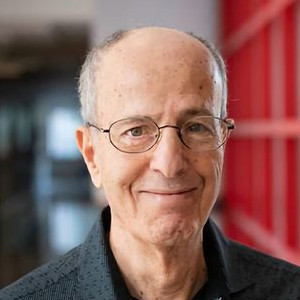
Yousef Saad, Professor
University of Minnesota
Spectral densities of matrices: How to approximate them and how to use them
==============================

Stephen T. Hedetniemi, Professor Emeritus
Clemson University
Hereditary Properties and Domination Chains in Graphs
A set of vertices S ⊆ V in a graph G = (V, E) is called independent if no two vertices in S are adjacent. The property of being an independent set is hereditary in that every subset of an independent set is also an independent set. The maximality condition for a set S to be independent is that for every vertex w ∈ V − S, the set S ∪ {w} is no longer independent, which means that every vertex w ∈ V −S is adjacent to at least one vertex in S. Thus, the condition which holds for a set S to be maximal independent is the same as the condition for a set S to be a dominating set. In this talk, we define several hereditary properties P of vertex sets in graphs, and for each property P we consider the question: what is the maximality condition for a set having this property P? We then ask: does this maximality condition give rise to a new type of dominating set? Several new types of dominating sets are discovered by this process.
Keywords: independent sets; hereditary properties; dominating sets in graphs.
==============================

Anotida Madzvamuse, Professor
University of British Columbia
Stability analysis of non-autonomous reaction-diffusion systems: the effects of growing domains and linear cross-diffusion
In this talk, by using asymptotic theory, I will generalise the Turing diffusively-driven instability conditions for reaction-diffusion systems with slow, isotropic domain growth. There are two fundamental biological differences between the Turing conditions on fixed and growing domains, namely: (i) we need not enforce cross nor pure kinetic conditions and (ii) the restriction to activator-inhibitor kinetics to induce pattern formation on a growing biological system is no longer a requirement. Our theoretical findings are confirmed and reinforced by numerical simulations for the special cases of isotropic linear, exponential and logistic growth profiles. In particular we illustrate an example of a reaction-diffusion system which cannot exhibit a diffusively-driven instability on a fixed domain but is unstable in the presence of slow growth. Furthermore, I will demonstrate the generalisation of Turing diffusion-driven theory using linear cross-diffusion, in particular, I will show that equal diffusion coefficients for the activator and inhibtor can give rise to patterning only in the presence of linear cross-diffusion, with or without domain growth.
==============================

Juan José Nieto Roig, Professor
The University of Santiago de Compostela
Nonlinear Fractional Differential Equations
We present some basic aspects of fractional calculus and fractional differential equations. The existence, uniqueness, approximation and stability of solutions of fractional differential equations will be presented.
Some real world applications of fractional equations will be indicated.
References
- S. Abbas, M. Benchohra, J.E. Lazreg, J.J. Nieto, Y. Zhou, Fractional Differential Equations and Inclusions: Classical and Advanced Topics. Series on Analysis, Applications and Computation, World Scientific, 2023.
- J.J. Nieto, Fractional Euler numbers and generalized proportional fractional logistic differential equation. Fractional Calculus and Applied Analysis 25 (2022), pp. 876-886.
- J.L. Wei, G.C. Wu, B.Q. Liu, J.J. Nieto, An optimal neural network design for fractional deep learning of logistic growth. Neural Computing and Applications 35 (2023), 10837-10846.
==============================

Abdon Atangana, Professor
University of the Free State
New trend of nonlocal operators and applications
Fractional differential operators have been recognized as powerful mathematical tools to replicate processes with power behaviors. However, they are many real-world problems that do follow power law behaviors. In this talk theory, methods and application of different nonlocal differential are presented.
==============================

Adel Bibi, Dr
University of Oxford
Certifying Deep Neural Networks at Scale
This talk is a robustness journey from adversarial attacks to certifiable deep models against adversaries. The talk will cover motivation and formal robustness definitions and why classical empirical defences are not sufficient. We will address challenges of scaling provable certification of deep networks, particularly, in randomized smoothing setting. The talk will cover the foundations of randomized smoothing, discusses extensions to general anisotropic regions of certification, e.g. ellipsoids and general cross polytopes, in addition to certifying geometric deformations, e.g. rotations. At last, the talk will hint at new directions towards certifying deep networks over arbitrary convex sets allowing for the reasoning of the certification of an ensemble of classifiers compared to the certificates of its constitutes.
==============================

James Gleeson, Professor
University of Limerick
Data-driven modelling of cascades on networks
Network models may be applied to describe many complex systems, and in the era of online social networks the study of dynamics on networks is an important branch of computational social science. Cascade dynamics can occur when the state of a node is affected by the states of its neighbours in the network, for example when a Twitter user is inspired to retweet a message that she received from a user she follows, with one event (the retweet) potentially causing further events (retweets by followers of followers) in a chain reaction. In this talk I will review some mathematical models that can help us understand how social contagion (the spread of cultural fads and the viral diffusion of information) depends upon the structure of the social network and on the dynamics of human behaviour. Although the models are simple enough to allow for mathematical analysis, I will show examples where they can also provide good matches to empirical observations of cascades on social networks.
==============================
